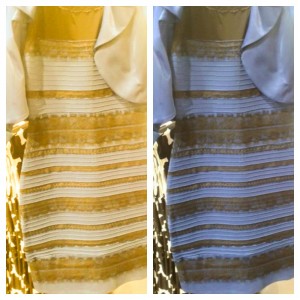Auditory Illusions- You Won’t Believe Your Ears!
Most of the illusions you’re used to seeing are visual ones, but auditory illusions are much more mindblowing. When something tricks your eye you can “try harder” to detect what makes the illusion, wherein audio you sometimes can’t.
McGurl Effect
A great example of visual vs. audio illusions is the McGurl Effect. Check it out:
Tritone paradox
A tritone is an interval of three tones (which you could guess by its name) and is equal to half an octave. Hear it first – In which of the examples have you heared the notes going up (from a lower note to a higher one) or going down (from a higher note to a lower one)? Let me know in the comments what you’ve heard!
So.. Did the notes went up or down? hear again – It might change now (but probably not). The reason it might change is because each note you hear is not really one note. The idea is that all of the notes are not in a specific octave but are in more than one. If you tried hearing the notes again and it sounds the same, that’s because our brain “got used” to those notes ascending or descending. And it doesn’t really matter if you’ll hear it in a higher or lower octave – you’ll still hear the same notes in different directions. It’s just like the black and blue dress vs. the white and gold dress that made the internet go nuts, just with sound!
Researchers found that you will most likely hear the same pattern as your mother. Feel free to check it out!
Deutch’s Octave scale Illusion
Diana Deutsch was the one who demonstrated that paradox first in 1986. Deutsch has another auditory illusion called “Deutch’s Octave scale Illusion”. For that illusion, you should put your earphones on, in case you have’t thus far.
In the next video, you’ll hear a stereophonic melody. It sounds like on right ear, there’s a melody that goes down, and then up, while the left ear hears the opposite (a low note that goes up and then back down). The video breaks down what you hear in each ear. You’ll find out that the melody you thought you heard was actually an illusion!
Dutch explains the illusion:
“Similar sounds are likely to become from one source and different sounds from different sources. With this type of pattern it makes sense for the listener to assume that tones in one frequency range are coming from one source and tones in another frequency range from a different source.”
Infinite Glissando Illusion
Diana Deutsch was also the one to demonstrate this illusion in 1995, so I guess you owe this interesting article to her. The next illusion is quite simple to understand how it’s done but still very cool. hear that sound? Somehow it will always sound to you as if it’s going down:
How’s it done? Quite simple actually. Every few seconds another note, one octave above the highest note, appears silently and increases with time. Here’s a video that’ll make it clearer for you. Look at the waves in the upper side and see how gently the new notes are rising.
The effect can also be in the opposite direction, where the sound is ascending instead of descending (If you can hear it for more than 2 minutes before getting crazy – you’re inhuman!)
Sound illusions can make you make you as much confuse, amazes and a bit nuts, while trying to understand them, just as much as visual illusions do (and sometimes even more). Test your friends and see who has the best ears to get them without knowing how the illusions work.










